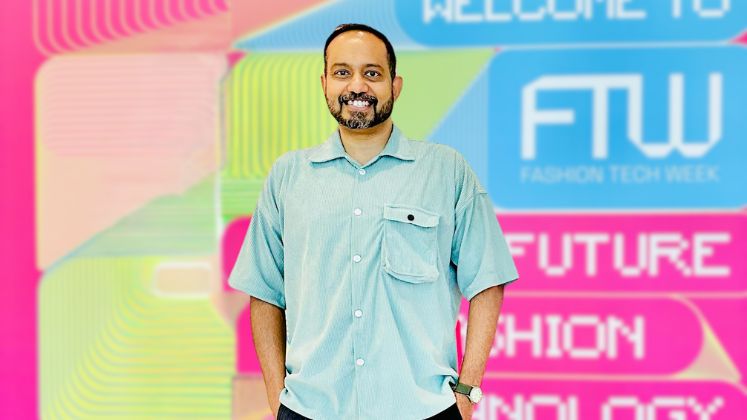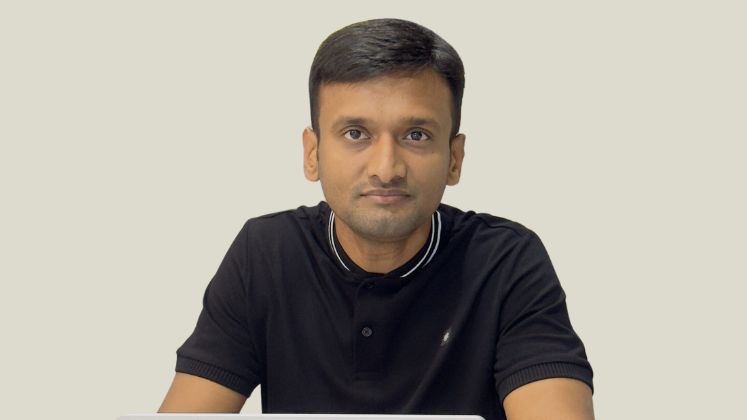The fashion industry is undergoing a massive tech-driven transformation, yet there’s still no real platform that celebrates these transformers making it happen.
That’s why we’ve come up with our ‘AR Tech Masters 2025’ to finally give them the spotlight! Whether it’s Max Fashion embedding AI across every part of the customer journey, Snitch replacing its third-party return management solution with an in-house platform or Forever New launching RFID across its stores and warehouses along with coming up with a Global Capability Center in Bengaluru, these innovators are making fashion faster, smarter, greener and more personalised.
Similarly, Arvind Fashions is using real-time data to fuel smarter inventory decisions, Texport Industries’ ERP and 3D design tools are streamlining manufacturing and reducing waste. The Pant Project’s eTailor custom fit tech is turning personalised menswear into a scalable, sustainable reality.
Indian Terrain Fashion is optimising IT systems for smoother operations while Raymond is enhancing customer engagement and brand growth through advanced analytics and digital innovations.
At the heart of these advancements are the people, the tech leaders, innovators and visionaries who are pushing boundaries and leading the charge into the future of fashion. We present to you these Tech Masters and the impact they’re making as well as their exciting plans for the future.
“WE’VE BUILT A TECH HUB IN BENGALURU TO STRENGTHEN GLOBAL TECHNOLOGY OPERATIONS”
Zahid Ansari, VP-Information and Retail Technology, Forever New
Our technology initiatives have been focused on making everyday operations more efficient, improving customer experience and supporting business growth in a practical way.
One of the biggest changes we’ve made is introducing RFID across our stores and warehouses. By embedding RFID tags into garments, we’ve been able to track inventory more accurately and in real time. This has helped us reduce manual errors, improve stock visibility and ensure better fulfilment, especially for online orders. It’s made a noticeable difference in how quickly and accurately we can serve our customers.
We also built a middleware layer for our supply chain, which has helped us move inventory in real time and enable asynchronous communication between various systems like Order Management System, Warehouse Management and our ERP. This has given us better control and flexibility, reduced delays in data flow and improved our ability to respond to stock movements quickly across locations.
In Bengaluru, we’ve established a Global Capability Center that brings together developers, integration specialists and support teams to strengthen our global technology operations. The focus here is on building in-house expertise, driving innovation and enabling faster delivery of tech solutions across markets. It’s helped us move away from a support-only model to one that actively contributes to new product development and long-term capability building.
On the customer side, we’ve worked on integrating systems like POS, E-Commerce, CRM and Loyalty programmes to create a more seamless view of customer interactions. We’re also making more use of cloud platforms and automation tools, which has helped us speed up tech rollouts and reduce downtime in stores.

What’s Next:
“We’re also looking at enhancing our omnichannel capabilities”
We’re exploring advanced analytics and AI-driven insights to better understand customer preferences, optimise assortments and personalise marketing.
On the supply chain side, we’re investing in improving demand forecasting and replenishment using machine learning models, which will help reduce stock-outs and overstock situations.
We’re also looking at enhancing our omnichannel capabilities, enabling features like real-time store inventory visibility for online shoppers, faster click-and-collect and easier returns across channels.
Lastly, we’re starting to evaluate how generative AI can be used in areas like content creation, customer service and assistive buying on our online platforms—helping customers discover products more easily based on their preferences and behaviour.
“OUR IN-HOUSE ERP DELIVERS REAL-TIME INSIGHTS INTO KEY BUSINESS METRICS”
Aartiee Chordia, Head of Digital Transformation and IT, Magnum Clothing
Over the years at Magnum Clothing, my technology initiatives have played a key role in driving business growth, optimising costs and improving overall efficiency across the organisation. With a unique blend of sales and IT expertise, I was able to identify critical pain points in our operations and implement tailored technology solutions that aligned with our business goals.
One of the most impactful initiatives was the development of a customised in-house ERP system. Designed specifically for our organisational needs, this solution provided real-time visibility into key business metrics such as order volumes, production progress and sales performance. This enabled faster and more accurate decisionmaking, especially for the sales and merchandising teams, who previously relied on fragmented or manual data collection processes. By automating and centralising our reporting tools, we significantly reduced the time spent on administrative tasks, allowing merchandisers to focus more on strategy and client relationships.
As the company scaled, I led the transition from a traditional server-based infrastructure to a cloud-based platform. This shift ensured seamless data access across departments, improved collaboration and reduced maintenance costs associated with physical servers. It also enhanced our data security and disaster recovery capabilities—critical aspects for any growing business.
More recently, I have focused on integrating AI and automation into areas like production planning, inventory control and demand forecasting. These efforts not only resulted in significant cost savings but also improved delivery timelines and customer satisfaction.
Overall, these digital initiatives have helped Magnum Clothing become more agile, data-driven and responsive to client needs.

What’s Next:
“I aim to implement advanced demand-based forecasting techniques”
I plan to leverage several new technologies and digital innovations to drive growth, efficiency and customer engagement. Specifically, I aim to implement advanced demand-based forecasting techniques, utilising AI and machine learning models to predict trends and optimise inventory management.
I also envision integrating AI into the design process, enabling quicker prototyping and personalised product recommendations. To streamline operations for merchandisers, I intend to introduce key data entry points utilising speech-to-text technology, significantly reducing administrative burdens and allowing them to focus more on strategic tasks. These initiatives will enhance agility, improve decision-making and ultimately foster a more responsive and customer-centric approach.
“WE’VE BUILT AI INTO EVERY PART OF OUR STORE EXPERIENCE”
Harshendra Maheshwari, National Head (Vice President) – Store Experience and Visual Merchandising, Max Fashion India
At Max India, we’ve been investing in training large language models to optimise various functions, and despite being in the early stages, we’re already witnessing promising results in terms of efficiency enhancements. Today, our Product Lifecycle Management (PLM) teams are at the forefront of leveraging advanced technologies and tools to drive innovation and growth.
Our designers utilise generative AI to accelerate graphic production and create tailored communications that resonate with our brand and customers. Meanwhile, our marketing and e-commerce teams have adopted advanced image manipulation techniques, significantly reducing the time and cost associated with photo shoots. Our planners rely on sophisticated forecasting tools to predict investments and minimise waste.
At our stores, we’ve invested in advanced AI-powered tools that capture every data point in the customer journey, from store entrance to cash counter. This granular data is then channelled into over 20 tailored dashboards, providing valuable insights into local market trends and customer preferences. By analysing shopper demographics, we’re able to identify unique opportunities for growth in each geography and tailor our services to delight customers with seamless experiences, such as instant messaging for quick checkout.
Our AI-driven approach has also enabled us to optimise inventory management, reducing cut sizes and ensuring that our customers receive the freshest products possible. We achieve this through a unique weekly launch cycle, introducing new styles that cater to evolving customer tastes. This agility is remarkable, especially considering our nationwide presence with over 500 stores.
The majority of our business KPIs, analytics and audit scores are now automated, significantly reducing manual effort and freeing up our employees to focus on highvalue tasks.

What’s Next:
“We’ll use data to manage stock dynamically and boost full-price sell-throughs”
We’re concentrating on three strategic areas of transformation to drive growth and excellence. First, we’re embracing data-driven decision making to ensure we have the right product, in the right size, at the right location. By using data insights, we’ll be able to manage stock dynamically and boost full-price sell-throughs.
Second, we’re focused on operational efficiency through automation. We’re streamlining dayto-day operations by automating routine tasks like audits and reviews, which frees up our teams to focus on more strategic work.
“WE USE REAL-TIME DATA TO TRACK INVENTORY LEVELS, PRODUCT POPULARITY AND TRENDS”
Kunal Mehta, CIO, Arvind Fashions Ltd.
We use real-time data analytics through our ERP systems and other connected tools to gain insights into inventory levels, product popularity and seasonal trends. The Demand and Forecasting tools and replenishment systems are used by us to for buying and merchandising by predicting future trends and demand patterns with accuracy.
The business team uses internal tools as well as works with partners by utilising in-store analytics to gain insights into individual customer preferences by tracking past purchases and browsing history, take informed decisions to offer personalised recommendations/ targeted promotions etc.
We also use our Loyalty platform, POS solutions and various digital assets (chatbots, social media and mobile apps, websites), to engage and communicate with our customers.
In fact, we are currently rolling out Microsoft D365 in our stores for better operations/ customer checkout experience.

What’s Next:
We’re embracing next-gen tech to improve our content, customer experience”
We are contemplating using multiple technologies like RFID to significantly enhance our operational efficiency by ensuring shelves are consistently stocked with the right products at the right time.
We’re also exploring multiple AI applications, including customer product recommendations, trend analysis, e-commerce search optimisation and merchandising. We are constantly evaluating and adopting the next generation of emerging platforms to improve our content, customer experience across different channels of customer purchase. We are also evaluating several tools to use store cameras to leverage heatmaps, footfalls, buying preferences and improve store layouts.
Having said that, we are constantly mindful of the RO that technology can bring to business and become long-term enablers.
“OUR PROPRIETARY ETAILOR TECHNOLOGY OFFERS PERSONALISED FIT GUIDANCE AND CUSTOMISATION”
Udit Toshniwal, Co-founder, Creative Director and CTO, The Pant Project
As a direct-to-consumer (D2C) menswear brand focused on custom-made pants, we’ve leveraged digital tools to build a seamless, scalable and custom-ercentric business model.
One of our key initiatives has been the integration of Increff, an advanced inventory management system that provides real-time SKU-level visibility.
To digitise our apparel manufacturing process, we rely on BlueKaktus, which streamlines vendor management, production tracking and purchase order systems. This has led to faster turnaround times and enhanced transparency, crucial in a made-to-order fashion model.
On the marketing side, Triple Whale enables us to track multi-channel performance with precise marketing attribution. With rising customer acquisition costs, this tool helps us scale our ad spend efficiently by focusing on channels that actually drive revenue.
Our proprietary eTailor technology offers personalised fit guidance and customisation, creating a high-conversion, tailored shopping experience.
What’s Next:
“We’re exploring virtual try-on technology and advanced fit prediction tools”
Looking ahead, we aim to further integrate AI-powered personalisation and predictive analytics to refine our product recommendation engine.
We’re also exploring virtual try-on technology and advanced fit prediction tools to boost buyer confidence and reduce returns—key to scaling our custom apparel business online.
On the operations side, we plan to implement a centralised ERP system to unify sales, production and customer data— enabling smarter forecasting and more agile decision-making.
To enhance conversational commerce, we’re developing WhatsApp chatbot experiences to support product discovery, fit queries and order tracking.
“OUR ERP UNIFIES ALL CORE BUSINESS FUNCTIONS”
Vinay Advani, GM-IT, Texport Industries Pvt. Ltd.
Being a tech leader, I believe technology is at the heart of business transformation.
One of our key achievements has been the successful deployment of a robust ERP system – ERP platforms that integrate all core business functions such as Order Processing, Procurement, Inventory, Finance and Supply Chain Management on a single platform.
A single source of truth has empowered business functions to take data-driven decisions. Data-driven decisions have helped to optimise the supply chain, reduce lead times, manage inventory more efficiently and minimise over procurement.
Digital transformation is often discussed at the front-end of fashion, but behind the scenes, it’s manufacturing that delivers the biggest wins. In our case, after the introduction of tech on the shopfloor and modernising our production systems using the best-fit solution for each process, we have seen significant improvement on the floor. A collaborative system that gives real-time visibility across all processes has empowered all the departments.
By implementing tools like 3D design software, that are helping seamless collaboration with the customer, which helps them move from concept to creation faster than ever before, this shift not only enhances sustainability but also boosts speed-to-market, customer satisfaction and added value to business growth. 3D tools reduce development expenses and sampling costs.
Technologies like RPA have boosted efficiency in HR and Finance, saving man-hours and freeing up teams for more impactful work.

What’s Next:
“We plan to expand our use of robotic process automation (RPA)”
We are exploring the adoption of generative AI in areas like product design, resource utilisation and data analysis.
Moreover, we plan to expand our use of robotic process automation (RPA) to further streamline repetitive tasks in order processing, billing and logistics coordination. We are also investing in solutions for supply chain transparency.
“WE’VE INTRODUCED DIGITISED PROCESSES IN MERCHANDISING, PRODUCTION AND WORKFORCE MANAGEMENT”
Biswajit Rath, Head Analytics, CRM and Digital Development, Raymond
With the growing shift in consumer behaviour toward digital-first engagement, Raymond has invested in creating a robust omnichannel presence. The brand’s digital platforms are now closely integrated with its physical retail footprint, offering customers a unified and personalised shopping journey. From realtime inventory visibility to AI-enabled recommendations and in-store smart mirrors, these innovations bridge the gap between convenience and experience.
Our commitment to efficiency is reflected in its adoption of advanced technologies for supply chain and inventory management. Automation, predictive analytics and centralised systems have significantly reduced operational friction and improved responsiveness.
Beyond customer-facing touchpoints, we have introduced process digitisation across merchandising, production planning and workforce management. These initiatives have helped streamline workflows and reduce manual dependencies.

What’s Next:
“We aim to roll out hyper-personalised marketing journeys”
Raymond is strategically positioning itself for the future by expanding its investments in phygital retail, AI-driven personalisation and data analytics to deepen customer engagement and operational intelligence. The company is enhancing its omnichannel ecosystem with integrated virtual try-on experiences, AI-based recommendation engines and smart mirrors in retail stores.
To drive efficiency, we are focusing on automation in production planning, predictive inventory management and smart sourcing platforms. With the customer at the centre, the brand aims to roll out hyper-personalised marketing journeys using behavioural and transactional data insights. We are also exploring blockchain for supply chain transparency and sustainability traceability.
“SUPPLY CHAIN IS BEING OPTIMISED BY THE USE OF SMART WAREHOUSE MANAGEMENT SYSTEMS”
Ranjan Sharma, CIO and Head of Supply Chain, Bestseller India
Our e-commerce and omnichannel initiatives have helped us open newer business channels to expand our reach and accessibility of brands to larger audience 24/7 increasing sales and engagement opportunities.
Using AI, we are able to drive personalisation at scale tailoring shopping experiences to individual preferences fostering customer loyalty and boosting sales. Automation of customer service using AI chatbots and customer service platforms are helping improve customer experience, satisfaction and retention and reduce cost.
Supply chain is being optimised by the use of smart warehouse management systems coupled with automation and AI-led transportation management systems to improve efficiency, real time tracking and transparency.
Sustainability and cost effectiveness is being driven by digital sampling and better predictions reducing waste and production costs and improving speed to market.
Data analytics and AI initiatives have helped us predict trends based on multiple factors like consumer behaviour, social media interactions, purchase history, weather conditions, etc., to deliver more targeted product offerings.

What’s Next:
“We plan to implement IoT enabled technology in retail space”
One key area is IoT in smart retail. Implementing IoT enabled technology in retail space will personalise in-store experiences and optimise operations. Also, deploying VR technologies at stores and digital channels will provide customers with engaging, immersive shopping experience enhancing both satisfaction and sales conversions.
Use of generative AI to create hyper personalised ads and content by analysing customer data makes marketing more targeted and effective. Agentic AI can handle real time customer queries and recommendations providing personalised assistance. It can also optimise stock levels by predicting demand patterns.
“SHAHI HARNESSES AI FOR PRECISE, REAL-TIME FABRIC ESTIMATES”
Manu Gupta, VP – Digital Transformation and IT, Shahi Exports, Knits Division
As one of the largest apparel and textile manufacturers in India, Shahi Exports has consistently been at the forefront of technological adoption.
We harness AI and predictive analysis to generate precise, real-time fabric estimates from cutting efficiencies and marker analytics, effectively curbing our fabric wastage.
Our Management Information System (MIS) dashboards provide comprehensive analysis of unit-level operational efficiencies, costs, inventories and workforce management. Further, data from our enterprise systems proactively highlights potential operational delays, suggests actions to ensure timely deliveries and forecasts potential shortfalls or missed shipments.
Shahi’s adoption of Manufacturing Execution System (MES), machine integration and IoT has achieved comprehensive product traceability, reduced maintenance and narrowed down the freshwater demand, thus strengthening its commitment to sustainable manufacturing. Moreover, automation across our processes minimises manual intervention, fostering seamless data flow and a complete paperless environment.
Shahi’s innovative embrace of digital designs, virtual reality and avatar-based virtual try-ons has revolutionised its product development, achieving a twofold acceleration and drastically minimising costs and waste by eliminating multiple sampling stages.

What’s Next:
“We are focused on digitising our entire supply chain”
We will continue to enhance AI and machine learning solutions to help us precisely plan our operations, ensuring quality and improving inventory management. We are focused on digitising our entire supply chain to handle the growing demand for traceability and sustainability in fashion.
We are also looking towards solutions like IoT-enabled smart garments and 3D printing solutions. Overall, the industry will soon see more connected smart solutions and is poised to offer on-demand production.
“WE’VE REPLACED THIRD-PARTY RETURNS WITH OUR IN-HOUSE SOLUTION”
Maruthy Ramgandhi, CTO, Snitch
Over the past year, we’ve completely revamped our digital shopping experience across web, iOS and Android platforms. This overhaul— focused on speed, UI/UX and personalisation—has led to a 36 per cent increase in conversion rates. Moreover, the experience is now truly omnichannel, enabling seamless transitions between online and in-store journeys and unlocking significant value from cross-channel behaviour.
We also replaced our third-party return management solution with an in-house platform. This gave us end-to-end control and drastically improved the return and exchange process, both in terms of UX and logistics. As a direct outcome, our Net Promoter Score has nearly doubled over the last two to three quarters.
Our loyalty programme, Snitch X, has grown to over 50,000 active members and now contributes a substantial share of our GMV. Designed with gamification and smart rewards, it has become a cornerstone of repeat purchases and long-term customer retention.
Another recent breakthrough is the launch of our creator platform, which powers a programme called Snitch Squad. We onboard micro and nano creators at scale, who generate high-performing content for us at a fraction of traditional production costs. Across each of these initiatives, the common thread has been ownership of our tech stack and customer data. This has allowed us to move faster, experiment more and drive measurable business outcomes.

What’s Next:
A key focus area is Omnichannel 2.0”
We’re actively investing in AI to automate and scale our design, content and merchandising workflows, reducing time-to-market for new collections. We’re also building a hyper-personalised shopping engine that tailors everything from homepage feeds to promotional nudges based on individual preferences and behavioural data.
A key focus area is Omnichannel 2.0, where we’re building deeper integration between online and offline journeys, be it through real-time inventory sync, store-assisted checkout or unified loyalty across channels.
“WE’VE IMPLEMENTED AI-BASED FOOTFALL ANALYTICS USING CCTV DATA”
Rajesh Verma, CTO, Indian Terrain Fashion Ltd.
My focus has been on implementing technologies that align closely with our business objectives, enhance customer experience and improve operational efficiency.
To optimise the performance of our EBOs, we have implemented AI-based footfall analytics using CCTV data. These systems track customer walk-ins, providing insights into conversion funnels. This data, once integrated with our POS and CRM systems, will create a comprehensive view of store productivity.
To improve the shopping experience and bridge the gap between offline and online retail, we have integrated a 3D virtual try-on feature on our website. This enables customers to visualise how products will fit and look, which has significantly increased their confidence in making online purchases and has led to a decrease in product returns.
We have introduced RPAs across various functions, This has led to the automation of considerable man-hours each year, improving accuracy and enabling our teams to focus on more value-added tasks.

What’s Next:
We’re implementing an AI-powered recommendation engine”
We’re in the process of launching a Gen AI-powered chatbot on our website to deliver instant, intelligent responses across product discovery, order tracking and service queries. This bot leverages LLMs trained on our product catalogue, FAQs and past chat history — enabling a richer, more human-like experience while reducing pressure on our customer support team.
We are also in the process of implementing an AI-driven recommendation engine on our e-commerce platform that will analyse customer browsing patterns, purchase history and seasonality trends to deliver hyper-personalised product suggestions. This initiative is aimed at enhancing the shopping experience, increasing cross-sell and upsell opportunities and driving higher conversion rates.







